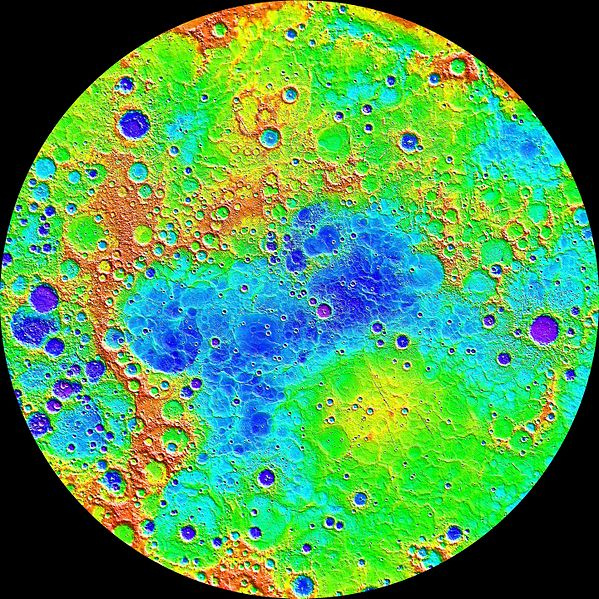
Image: The Messenger spacecraft's seven science instruments during the more than four-year orbital mission mapped the topography of Mercury's northern hemisphere in great detail. The view shows a colored relief map. Lower regions are shown in purple and higher regions are shown in red. The altitude difference between the lowest and highest regions shown here is about 10 kilometers! Credit: NASA/Johns Hopkins University Applied Physics Laboratory/Carnegie Institution of Washington.
There have only been three space probes that have been sent to the planet Mercury:
• The American probe Mariner 10, launched in November 1973, made three flybys of Mercury in March 1974, September 1974 and March 1975. It has mapped around 45% of Mercury's surface and provided important data on the composition of its atmosphere, geological structure, magnetosphere and magnetic field.
• The Messenger mission, launched in 2004 also by NASA. It was the first mission to enter orbit around Mercury, in 2011. Messenger mapped the entire surface of the planet, made measurements of the composition of its soil, atmosphere, magnetic field and internal structure, as well as past volcanic activity.
• The European-Japanese probe BepiColombo, launched in October 2018, is currently en route to Mercury. The two orbiters that make up the mission are scheduled to orbit Mercury in December 2025. It is made up of two main modules: an MPO orbiter (ESA) and an MMO transfer module (JAXA). The third module, the Mercury Transfer Module (MTM) whose prime contractor is the European Space Agency, supports the propulsion of the MPO and MMO modules to Mercury's orbit. BepiColombo should help to better understand the composition of Mercury, its formation and its evolution, as well as its exosphere (the outermost layer of the atmosphere of a celestial body).